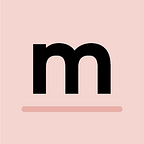Foundation: A Bridge to University
Co-Designing Higher Education with Refugee Students
What started out as an attendance check quickly became a platform for Jamiya Project students to drive course content. As described in a previous blog, the Jamiya team started using WhatsApp alongside the delivery of the applied IT course in Za’atari Camp to drive course discussion and communication between students and teachers.
The course WhatsApp channel rapidly transformed from logistical inquiries such as where the next session would be to lively debate on course topics driven by student postings of assignment questions or screenshots. The use of WhatsApp for homework was started by one of our local tutors in Zaatari, Hussein, who began using it for students who had missed classes. All his students had smart phones and the small data required for messages meant that it was effective despite the 3G network being unavailable over Zaatari camp.
The Jamiya Project team built on this innovation when Oula Abu Amsha, Jamiya’s Academic Advisor, noticed a significant improvement in student engagement outside of the classroom.
This capacity of students and local tutors to enhance the course was one of the biggest takeaways from last Fall’s pilot university course. The use of Whatsapp in Zaatari is a small example of what has been termed ‘bottom-up’ innovation in humanitarian settings: “the way in which crisis-affected communities engage in creative problem-solving, adapting products and processes to address challenges and create opportunities” (Betts, Bloom and Weaver, 2015). It places a particular agency on those communities affected by crisis and draws on the local knowledge and skills of the students and broader refugee community to create solutions.
What does this have to do with refugee education?
When it comes to designing models for refugee education, adaptation is key because of the numerous logistical, educational and administrative challenges of implantation in places like Zaatari. Drawing on ‘bottom-up’ innovation is one way to ensure a more adaptive model of education.
Outside of refugee or humanitarian contexts, working with students to design or co-create aspects of courses has been seen to enhance student engagement and motivation; improve students’ metacognitive awareness; and ultimately improve learning outcomes. Additionally, engaging with the ‘student voice’ offers critical insights into the learning environment.
Where does the Jamiya Project come in?
Approaches to co-design in education exist on a continuum with varying degrees of student involvement in their education used adaptively in different contexts. The Jamiya Project model is to identify opportunities for co-design with refugee students and communities across three areas of learning design:
1. Establishing of a vision for the course
2. Content and curricula adaptation
3. Delivery and learning environment
In any of the three potential areas, the impact of co-designing courses alongside students goes beyond benefitting the Jamiya Project programmes. The benefits to students, such as improved metacognition, will be critical in adaptation throughout their education journey. Furthermore, codifying a method that draws on local community knowledge can generate a template that can be efficiently replicated across different contexts.
Jamiya Project founder, Ben Webster, provides a more detailed analysis and description of the Jamiya Project co-design proposal in his blog here.
Jamiya Project Catch-Up: Reflections, Research, Ideas & Iterations ← PREVIOUS
Different Destinations: A Design Challenge → NEXT
Sign-up for our newsletter for the Top 5 Things to Know about Jamiya each month
